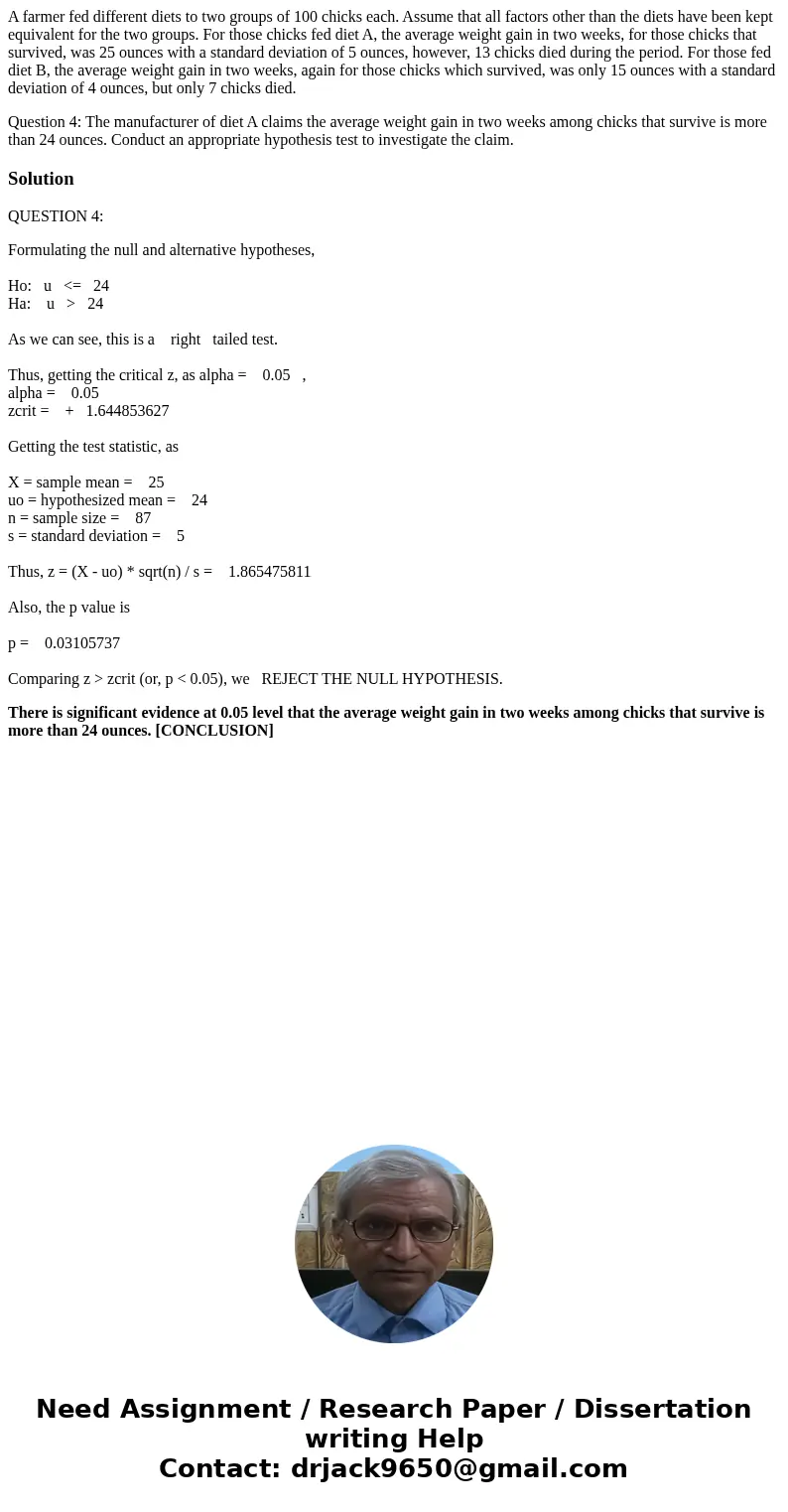A farmer fed different diets to two groups of 100 chicks eac
A farmer fed different diets to two groups of 100 chicks each. Assume that all factors other than the diets have been kept equivalent for the two groups. For those chicks fed diet A, the average weight gain in two weeks, for those chicks that survived, was 25 ounces with a standard deviation of 5 ounces, however, 13 chicks died during the period. For those fed diet B, the average weight gain in two weeks, again for those chicks which survived, was only 15 ounces with a standard deviation of 4 ounces, but only 7 chicks died.
Question 4: The manufacturer of diet A claims the average weight gain in two weeks among chicks that survive is more than 24 ounces. Conduct an appropriate hypothesis test to investigate the claim.
Solution
QUESTION 4:
Formulating the null and alternative hypotheses,
Ho: u <= 24
Ha: u > 24
As we can see, this is a right tailed test.
Thus, getting the critical z, as alpha = 0.05 ,
alpha = 0.05
zcrit = + 1.644853627
Getting the test statistic, as
X = sample mean = 25
uo = hypothesized mean = 24
n = sample size = 87
s = standard deviation = 5
Thus, z = (X - uo) * sqrt(n) / s = 1.865475811
Also, the p value is
p = 0.03105737
Comparing z > zcrit (or, p < 0.05), we REJECT THE NULL HYPOTHESIS.
There is significant evidence at 0.05 level that the average weight gain in two weeks among chicks that survive is more than 24 ounces. [CONCLUSION]

 Homework Sourse
Homework Sourse